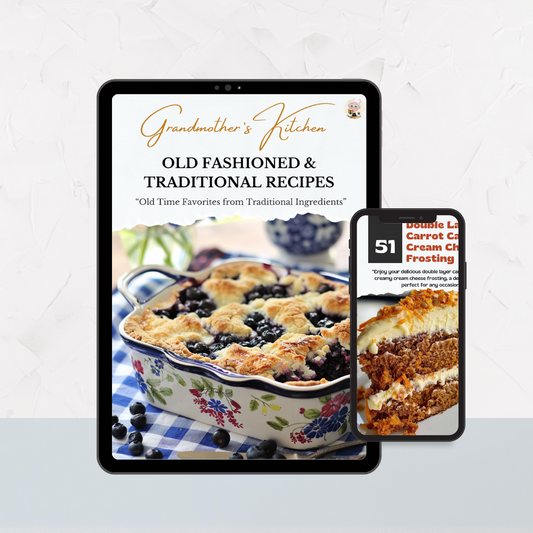The Best Sweet Pickled Beets Recipe | How to Make and Can Homemade Pickled Beets

Share
Sweet Pickled Beets Graced Our Dinner Table On Special Nights
There’s something unforgettable about my mother’s sweet pickled beets. I can still recall the sight of her hands stained red from peeling the freshly boiled beets, a sight that always signaled something special was on its way. The kitchen would be filled with the earthy aroma of beets mingling with the sweet, tangy scent of the brine, a fragrance that seemed to wrap itself around our home like a warm blanket.
After the beets had simmered in their spiced bath, my mother would line up the hot jars on the counter, each filled with vibrant red slices that glistened in the sunlight streaming through the windows. The satisfying pop of the lids sealing was music to our ears—a sign that another batch of her famous sweet pickled beets was ready to join the rows of preserved goodness in the pantry.
And the taste—oh, the taste! The combination of the sweet, tangy brine with the earthy, slightly sweet beets was pure magic. Those pickled beets were a family favorite, always gracing our dinner table on special nights. Even now, whenever I make a batch of sweet pickled beets, I’m transported back to those days, to the satisfaction of seeing those jars lined up, filled with the vibrant essence of the season’s harvest.
Did You Know?
Beets are not only delicious but also packed with nutrients. They are a great source of fiber, vitamins, and minerals, particularly folate, manganese, and vitamin C. Historically, beets have been used for their medicinal properties, and their vibrant color makes them a beautiful addition to any dish. Additionally, beets are known to support heart health, improve blood flow, and lower blood pressure due to their high nitrate content.
Sweet Pickled Beets Recipe
Yield: 4 quarts
Ingredients:
- 5 pounds fresh beets (about 8 cups chopped or sliced)
- 2 cups water
- 2 cups granulated sugar
- 2 cups vinegar (5% acidity)
- 1 tablespoon pickling spice
- Cheesecloth
- Twine
- Tongs
Instructions:
1. Prepare the Jars:
- Sterilize Jars: Wash jars, lids, and bands in hot, soapy water. Rinse well. Place jars in a large pot, cover with water, and boil for 10 minutes. Keep jars hot until ready to use.
- Prepare Lids: Heat lids in simmering water (not boiling) until ready for use. Do not boil. Set bands aside.
2. Prepare the Beets:
- Boil Beets: Place beets in a large pot and cover with water. Bring to a boil and cook until beets are tender, about 30-40 minutes.
- Cool and Peel: Remove beets from water and allow to cool. Once cool enough to handle, peel the skins off using your hands or a paring knife.
- Chop or Slice: Cut the peeled beets into desired sizes—either chop into chunks or slice thinly.
3. Prepare the Brine:
- Make a Spice Bag: Place pickling spice in a piece of cheesecloth and tie it with twine to make a spice bag.
- Boil Brine: In a large pot, combine water, sugar, and vinegar. Add the spice bag. Bring to a boil.
4. Combine Beets and Brine:
- Add Beets to Brine: Add the chopped or sliced beets to the pot with the brine. Simmer together for 10 minutes to allow the beets to absorb the flavors.
5. Pack the Jars:
- Pack Beets and Brine: Using tongs, pack hot beets into hot jars, leaving 1/2-inch headspace. Pour hot brine over the beets, maintaining the 1/2-inch headspace. Remove air bubbles by running a non-metallic spatula around the inside of the jar.
- Remove Air Bubbles: Run a non-metallic spatula around the inside of the jar to remove air bubbles.
- Wipe Rims and Apply Lids: Wipe jar rims with a clean, damp cloth. Apply lids and screw bands until fingertip tight.
6. Cool and Store:
- Cool Jars: Place jars on a towel to cool for 12-24 hours. Do not disturb while cooling.
- Check Seals: After cooling, check seals. Lids should not flex up and down when pressed. Store in a cool, dark place for up to a year.
Nutritional Information (Per Serving - 1/2 cup of pickled beets):
Calories: 60, Protein: 1g, Carbohydrates: 15g, Fat: 0g, Sugars: 14g
Kitchen Tips, Great Ideas, How to Save Money:
1. Choosing Beets: Select firm, unblemished beets for the best flavor and texture. Smaller beets are often more tender.
2. Blanching Tips: To peel beets easily, make sure to cool them in ice water immediately after boiling.
3. Sterilization is Key: Always sterilize jars and lids to prevent contamination and ensure a long shelf life.
4. Spice Bag: Using a spice bag allows you to infuse the brine with flavor without having to strain out the spices later.
5. Proper Sealing: Ensure lids are fingertip tight, not over-tightened, to allow air to escape during cooling.
6. Headspace is Important: Leave the correct amount of headspace to allow for expansion and to ensure a proper seal.
7. Remove Air Bubbles: Removing air bubbles prevents trapped air, which can lead to spoilage. Use a non-metallic utensil to avoid damaging jars.
8. Storage Conditions: Store pickled beets in a cool, dark place to maintain quality and prevent spoilage. Avoid storing near heat sources or in direct sunlight.
9. Labeling Jars: Always label jars with the date and contents. This helps keep track of inventory and ensures you use older jars first.
10. Reuse and Recycle: Save money by reusing jars from store-bought products. Just ensure they are properly sterilized before use.
What Are The Best Varieties Of Beets for Canning?
When it comes to canning, not all beets are created equal. Varieties like Detroit Dark Red, Chioggia, and Golden beets are particularly well-suited for canning. Detroit Dark Red beets are the most commonly used due to their deep red color and smooth, sweet flavor, which holds up well during the canning process. Chioggia beets, with their unique pink and white rings, add a beautiful visual appeal to pickled beets, though their color can fade slightly during processing. Golden beets offer a mild, sweet flavor and a striking yellow color that remains vibrant after canning. Each variety brings its own unique taste and appearance to your canned beets, allowing you to enjoy the fruits of your labor throughout the year.


